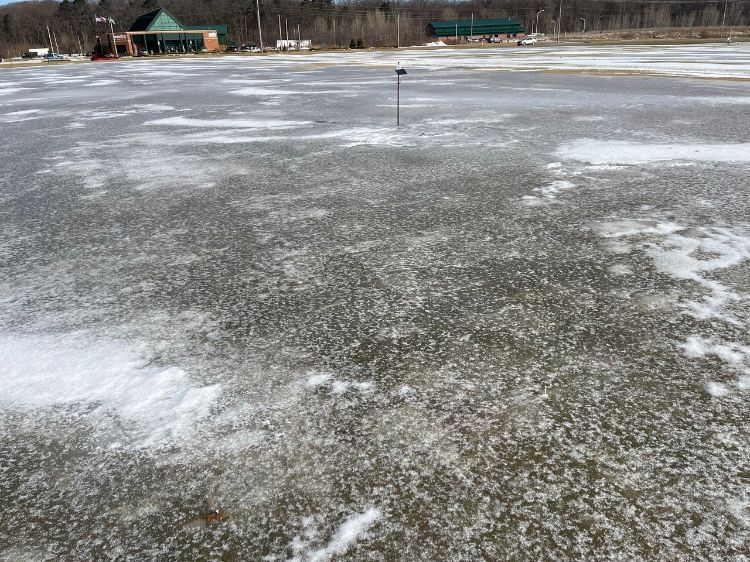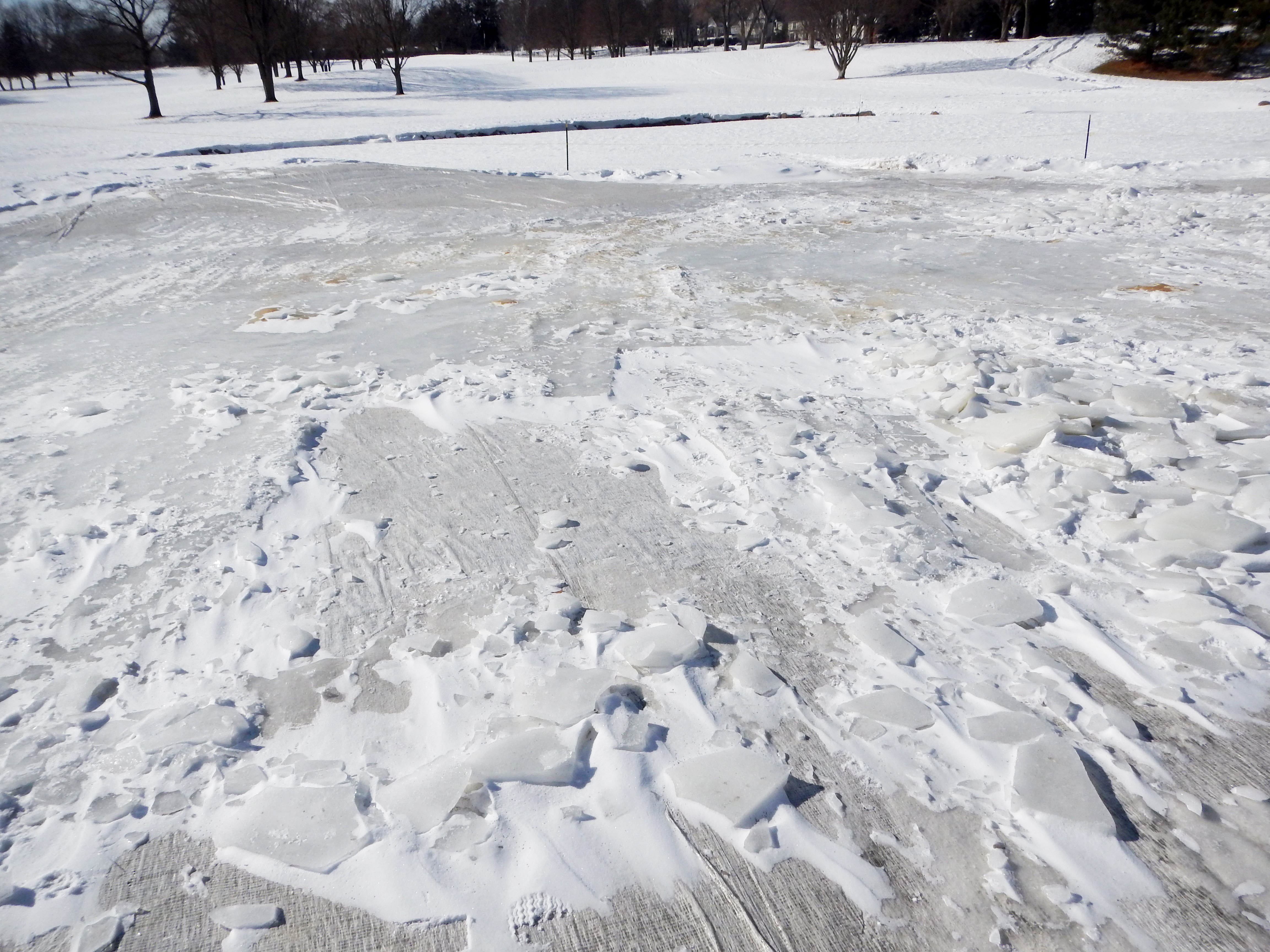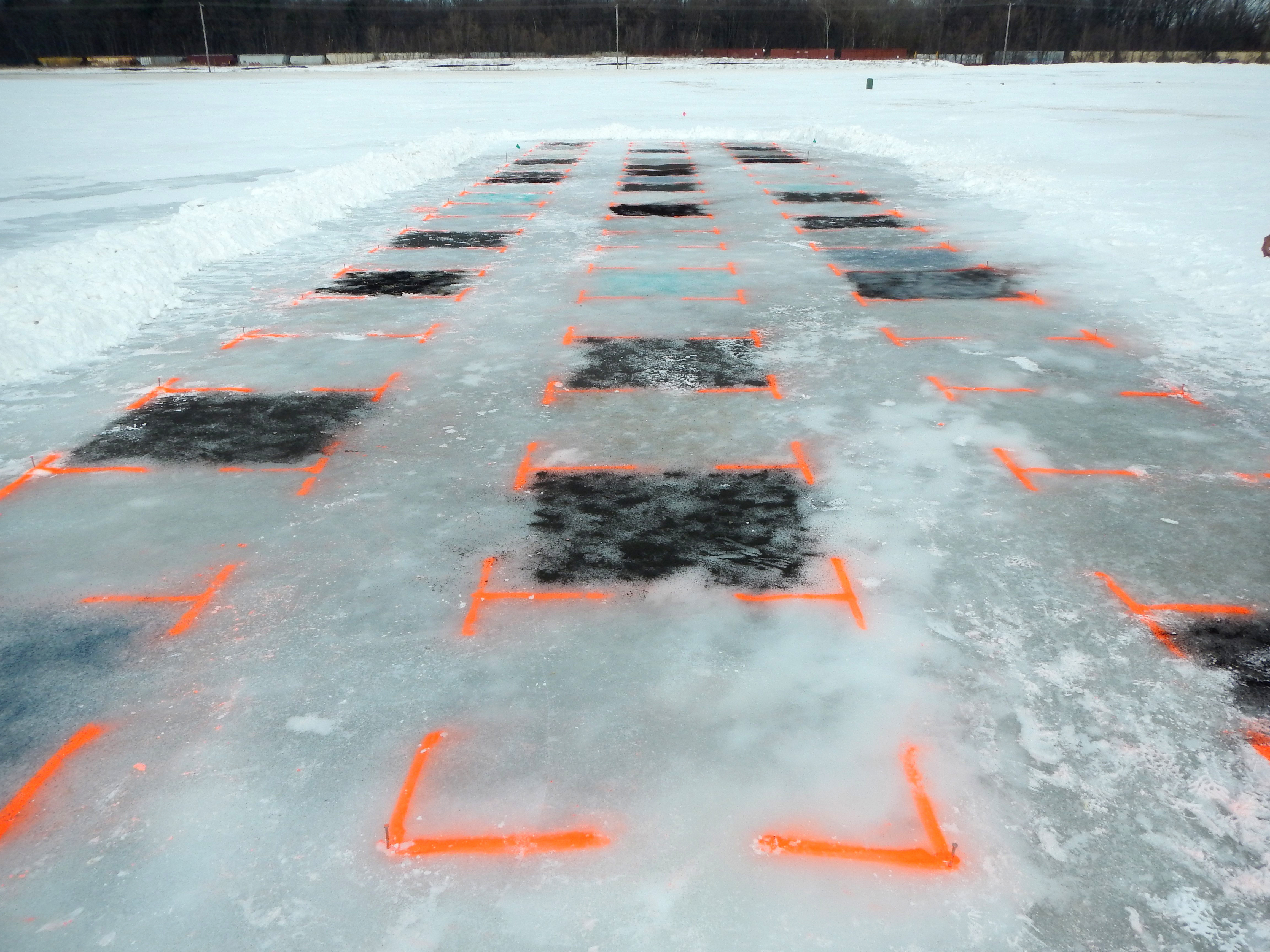Current situation of ice on putting greens
Golf course superintendents across the north are dealing with ice cover on putting greens and deciding what actions to take to ensure turfgrass survival.

Unlike the non-winter of 2024, the winter of 2025 has reminded Michiganders of what winter can be. Cold temperatures and Polar Vortex, frequent snowfall, ice events, and rain and melting conditions mixed in along the way have resulted in ice formation on putting greens in some areas of Michigan. The weather data that follows is specifically from the Michigan Automated Weather Network Station located at the Hancock Turfgrass Research Center in East Lansing, Michigan. Specifically, there are two different stretches of weather that might have resulted in ice formation. A brief warm-up on January 17 and 18 with high temperatures near 40 degrees Fahrenheit resulted in snow melting and possible ice formation followed by high temperatures in the single digits a couple days later. The second warm-up, January 27 to 31 with high temperatures once again at 40F or higher followed by up to ½ inch rain on January 31 and then temperatures below freezing starting on February 1, another potential ice forming event.
I’ve received reports from superintendents stretching from Grand Rapids through Lansing to greater Detroit reporting ice on putting greens. However, unlike the apocalyptic ice/winterkill event of 2014, the ice formation is more scattered with some courses and areas of the state appearing affected while others are untouched.
As we approach the middle of February, there is both good and bad to be recognized with this date. The key question for anyone dealing with ice is when did you start your ice clock? Many superintendents vividly remember the winter of 2013-2014 that resulted in thick ice sheets remaining in place for up to 80 days in some locations. That winter produced ice on putting greens the first week of January and it never melted until March, which resulted in death from anoxia (suffocation).
Remember, estimates of days of ice cover causing death for annual bluegrass range from 45-90 days and 120 days for creeping bentgrass. Just last year some locations in northern Minnesota suffered over 150 days of ice cover that killed not only annual bluegrass but also creeping bentgrass.
So when did your clock start? If your ice clock started around February 1, I would have minimal concern in most areas as it is likely Mother Nature will “help the melt” before you reach 30-45 days of ice cover. If your ice clock started following the January 17-18 melt and subsequent refreeze, then the turf is in the danger zone of life/death and it’s probably time to consider removal strategies or at a minimum collecting samples to assess injury.
Removing ice
Whether or not to attempt ice removal is a difficult decision for golf course superintendents. The decision to remove ice can be based on several factors, including turf sampling, duration of ice cover, current and future temperatures, ability to remove water following melting from the green, and labor.
Sampling. There’s a great YouTube video from Bob Vavrek of the USGA on how to sample greens under ice to assess survival. An important point that Vavrek makes is that there is variability in sampling and just because your sample comes out alive doesn’t mean all areas on the green will survive—same can be said if your sample is dead.
Duration of ice cover. As discussed in the previous section, estimates of days of ice cover causing death vary from 45-90 for Poa annua and 120 days for creeping bentgrass. Check your ice clock and proceed accordingly.
Temperatures and sunshine. Check your local forecast for temperatures and hopefully sunshine that will facilitate ice removal and melt. Part of the concern with removing ice is exposing the turf to cold air temperatures after being insulated with snow and ice for long periods of time. In the past, some superintendents have removed ice and then recovered the greens with snow to provide insulation against cold temperatures.

Physical ice removal. Physical ice removal includes practices to fracture the ice with impact (hammers, chisels, aerifiers, slicers) and then remove the fractured ice sheet with shovels, tractors or skid steers. Avoid direct impact with tools such as hammers—I’ve seen superintendents use a vibratory tamp with good results as it minimizes direct impact when shattering the ice. There’s always some risk associated with impact related ice removal, but the alternative of leaving ice in place and rolling the dice on survival is also risky.
Melting ice. There are many different products that have been used to melt ice including black sand, dark colored natural organic fertilizers, sunflower seeds and fertilizers. The key to any melting strategy is to be able to remove the water from the green following melting so it doesn’t refreeze and form another ice sheet.
Hollman et al. (2017) published an article on the “Effects of De-Icing Products on Putting Green Turf.” The results indicated that urea-based chemicals have the potential to severely damage turfgrass when applied to snow/ice free turf in early March. We applied these same treatments at Michigan State University in 2014 to an ice-covered putting green, but were unable to assess turfgrass injury as all the turfgrass was dead by the time the ice receded. A YouTube vide of this trial.

My simple message to selecting melt materials is keep in mind that whatever you apply will ultimately end up on the turf. If you don’t feel comfortable applying it to turf, that should tell you something about applying it to ice.
Labor. If you’re going to remove ice, you need help. Ice removal is not a one-person job. If your golf course has 18 greens covered in ice even with several employees helping, this is not going to be finished in one day.
There are few guarantees in life or ice cover
There are no guarantees with respect to winterkill and whether ice removed will save the turf. The days under ice cover for survival are estimates from research and conditions from course to course and even within the same course vary, thereby effecting how long turf can survive under ice.



 Print
Print Email
Email

